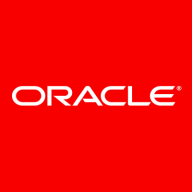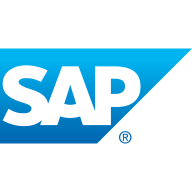

SAP SuccessFactors and Oracle HCM Cloud compete in the human capital management software category. Oracle HCM Cloud may have the upper hand due to its strong emphasis on talent management and support across various industries with customizable configurations.
Features: SAP SuccessFactors offers a modular approach covering the entire employee lifecycle, with a focus on integration and innovation. Key features include workforce analytics and talent solutions. Oracle HCM Cloud provides comprehensive features that support the employee lifecycle with a strong emphasis on talent management, integration, and flexibility for diverse industries.
Room for Improvement: SAP SuccessFactors needs better analytics, user interface enhancements, and improved customization flexibility. It also requires stronger global integration and localization. Oracle HCM Cloud needs to enhance its user experience, and increase localizations for global payroll solutions. Both systems could benefit from simplifying user interfaces and streamlining processes.
Ease of Deployment and Customer Service: SAP SuccessFactors is adaptable across deployment models, though some users face challenges with technical support responsiveness. Oracle HCM Cloud offers flexible deployment options, including public and hybrid models, and generally satisfies users with customer service, although technical support delays have been noted.
Pricing and ROI: SAP SuccessFactors is considered costly with module-based pricing, offering potential ROI through automation but is seen as suitable mainly for larger companies. Oracle HCM Cloud is also expensive, with competitive pricing and ROI potential, designed for scalability, and beneficial for multinationals by supporting various business processes. Pricing can be a concern for smaller organizations.
It is time-saving in payroll processing.
The ROI is more about easing operations rather than quantifiable metrics.
I have been facing an issue with Journeys, and I had raised a couple of SRs, but unfortunately, there has been no solution until now.
Oracle provides robust technical support, with regular updates every six months or quarterly.
Oracle's technical support is generally satisfactory yet lacks flexibility and rapid response times.
You can't scale HCM on Fusion Cloud as a standalone service.
We have implemented it for 25,000 employees, scaling from 7,000 to 25,000 using the same set of rules, and it was not difficult.
While I have not seen any downtime, the system can be slow at times.
I hardly ever encounter any stability issues, as SAP SuccessFactors is very good and stable.
The solution is absolutely stable.
Instead of uploading documents, a default integration with local government authorities would simplify onboarding.
Standardizing the exposure of functionalities within the application as external interfaces could enhance integration capabilities.
Advisories can only be placed at the bottom, which is less effective as employees may not scroll down to see them.
They should implement soft connectors through a marketplace for virtual learning integration with platforms such as Teams, Cisco, and Webex, rather than relying on hard connectors using APIs.
Workforce analytics is still challenging due to customizations. It does not provide flexibility in terms of analytics, and we have to customize extensively.
Oracle HCM Cloud pricing is a bit expensive compared to newer solutions.
Licensing costs were also a consideration, particularly regarding contractors.
The pricing is not bad, however, it is not affordable for everyone, especially in Africa.
The licensing cost is not expensive now.
The licensing costs are quite high, which is a typical scenario for such solutions.
The integration capabilities of Oracle HCM Cloud are valuable, particularly its support for managing global HR operations, including absence management, talent management, employee recruitment, and performance evaluations.
For Core HR, all the UI has been changed from different, responsive to Redwood.
This makes operations easier, and Oracle has excelled in this area with Fusion Explorer.
There are limitations when retrieving specific data such as questions from SCORM 1.2 or 2004; the system can only retrieve answers but not questions.
The best features of SAP SuccessFactors are workflows, the storyboard, the workforce analytics, and customization in terms of doing those portlets and MDIs, which are much simpler.
SAP SuccessFactors has advantages in providing AI-driven initiatives such as candidate screening and matching features within the recruitment module.
| Product | Market Share (%) |
|---|---|
| SAP SuccessFactors | 16.5% |
| Oracle HCM Cloud | 8.7% |
| Other | 74.8% |


| Company Size | Count |
|---|---|
| Small Business | 25 |
| Midsize Enterprise | 18 |
| Large Enterprise | 32 |
| Company Size | Count |
|---|---|
| Small Business | 22 |
| Midsize Enterprise | 13 |
| Large Enterprise | 69 |
Natively built for the cloud, Oracle Fusion Cloud Human Capital Management is a complete solution that connects every human resource process—and every person—across your enterprise. We help you create a community where people feel valued, heard, and like they belong. With a single user experience and data model and seamless processes and infrastructure, Oracle Cloud HCM can help you redefine what best looks like for your people.
Platform capabilities empower every HR process including: Global HR, Talent Management, Recruiting, Learning, Workforce Rewards, Workforce Management, Work Life Solutions, HR Help Desk, Workforce Health and Safety Incidents, Payroll Management, Benefits Management, Advanced HCM Controls, and Strategic Workforce Planning.
Top 10 Reason Why Customers Choose Oracle Cloud HCM:
Employees expect tailored experiences from their work technology and want to feel supported by their organization regardless of where, when, and how they work. Providing employees with a tailored user experience is now a necessity—one that many HR teams are striving for as they evaluate their technology. That’s why Oracle Cloud HCM offers the only complete employee experience platform that empowers your people to connect, grow, and thrive.
HR is at the forefront of navigating change and needs to be able to adapt quickly as new challenges arise. Oracle Cloud HCM delivers an adaptable and flexible solution to meet changing business practices, regulations, and environments.
Organizations that want to manage the entire employee lifecycle select Oracle Cloud HCM because it’s the most complete HR cloud solution on the market. Built as a single cloud solution for all HR functionalities, it connects every HR process from hire to retire.
One of the many things that sets Oracle apart from other vendors is that we natively built our software-as-a-service (SaaS) applications on our own cloud platform and infrastructure. With applications and data all on one platform, you can gain unobstructed visibility across your organization and increased data security
Oracle customers leverage our HCM cloud application to drive business value through better user engagement and adoption, streamlined processes, improved productivity, and lower total cost of ownership
Innovation is the biggest benefit of moving your systems to the cloud. Our quarterly updates allow us to continuously deliver new and exciting features. With a team of more than 20,000 engineers, Oracle delivers more than 1,000 innovation updates annually—80% of which are based on customer feedback.
Oracle has a strong security culture and is trusted by
organizations worldwide with strict security requirements. Stored in state-of-the-art data centers, Oracle Cloud HCM and our infrastructure have advanced multilayered security measures that can help customers meet both local and international regulations
Oracle Cloud Customer Connect is a vibrant online
community of more than 40,000 HCM users and a great place to crowdsource information, discuss the latest releases, register for in-person or virtual events, and submit product suggestions.
Oracle customers have access to an implementation success manager, on-demand education, and success planning tools. We offer 24/7 customer service in 145 countries worldwide to help you maximize the value of your investment.
Most enterprises today operate at both the global and local levels, so our customers appreciate that Oracle Cloud HCM is designed to meet both international and regional needs for more than 200 jurisdictions and 27 languages.
Oracle HCM Cloud is a complete HR application suite which helps organizations become more strategic and agile with a best-in-class workforce experience. It integrates HR best practices and technology to provide an engaging, informative, and adaptive HR experience throughout the entire employee lifecycle. Oracle HCM Cloud allows organizations find, develop and retain the best talent, enable collaboration, deliver deep workforce insights, and increase operational efficiency
SAP SuccessFactors is an AI-powered, cloud-based HR suite supporting over 100 countries, providing real-time insights and integrated solutions across core HR, payroll, talent, learning, analytics, and employee experience.
Trusted by over 10,000 organizations, SAP SuccessFactors elevates people processes, decisions, and experiences by empowering employees. It offers AI-driven tools enhancing self-service, learning, performance, and development, unifying people and skills data to align talents with business goals. The platform ensures compliance with legal updates and speeds up results using HR best practices and a robust partner network. Its modular design, seamless integration, and mobile access stand out, supporting global accessibility and talent management. Role-based permissions and automated compliance offer flexibility and security, catering to diverse industries.
What are the most important features of SAP SuccessFactors?Organizations implement SAP SuccessFactors for Performance Management, Talent Acquisition, Learning, and HR core functions, streamlining recruitment, onboarding, records management, goal setting, and performance evaluation. It extends to time management, compensation, and talent development, integrating across geographies for centralized data management, reporting, and analytics, enhancing HR operations and employee engagement.
We monitor all Cloud HCM reviews to prevent fraudulent reviews and keep review quality high. We do not post reviews by company employees or direct competitors. We validate each review for authenticity via cross-reference with LinkedIn, and personal follow-up with the reviewer when necessary.